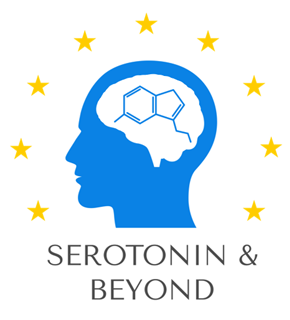Serotonin and Beyond explained
Project summary
Serotonin is a neurotransmitter playing a crucial in the onset and treatment of neuropsychiatric disorders. Most of the drugs currently used in psychiatry target serotonin (neuro)transmission. However, it is becoming increasingly clear that the efficacy of these drugs is suboptimal. As a result, the prevalence and burden of these disorders remain high. A new wave of research revealed that serotonin plays important role in neurodevelopment.
Changes in serotonin levels lead to changes in developmental processes with consequences for the serotonin system and beyond. This makes it plausible that the origins of these disorders do not per se lie in disturbed serotonin neurotransmission, but rather in serotonin-mediated neurodevelopmental changes. This would require a radical different view on disease burden reduction.
We hypothesize that it are the serotonin-mediated non-serotonergic downstream changes in neurodevelopment that are at the basis of serotonin-related neuropsychiatric disorders.
SEROTONIN and BEYOND will establish an interdisciplinary, intersectoral and international scientific network to test this hypothesis. It will enable paradigm shifts in the understanding of vulnerability to neuropsychiatric disorders, and provide groundwork for critical windows in development for future interventions. To achieve these goals, top-class academic and industrial scientists will train Early Stage Researchers (ESRs) in the full spectrum of state-of-the-art neuroscientific technical approaches. We will equip these ESRs with translational and entrepreneurial thinking by providing intersectoral and transferable skills training.
In summary, we will train a new generation of ESRs in the integrated field of serotonin, neurodevelopment and psychiatry to deliver 15 excellent young researchers who are optimally prepared for their future academic and industrial careers.
Objectives
The overarching objective of this ETN is to provide high-level training in the field of serotonin, neurodevelopment, neuropsychiatry and neurotechnologies. A new generation of young , high achieving early stage researchers (ESRs), will be equipped with a combination of multi-faceted technical skills and a thorough understanding of brain development.
We will deliver ESRs excelling in cross-species data translation, neurotechnologies and transferable skills necessary for thriving careers in a rapidly evolving area that requires innovative scientific and technological development.
This goal will be achieved by a unique combination of “hands-on” research training, non-academic secondments and courses and workshops on scientific and complementary “soft” skills. These training activities are facilitated by the academic (10) – non-academic (11) composition of the consortium. S&B ESRs will be trained and well-positioned to address the current and future Societal Challenges, such as providing affordable health to the European population. The strength of this application is that it focuses on serotonin-mediated neurodevelopmental processes and behavioural and cognitive correlates that cut across diagnostic categories (such as depression, autism spectrum disorders (ASD), and impulse control disorders like attention deficit hyperactivity disorder (ADHD)).This we denote as transdiagnostic behaviour and cognition.
Our ESRs will increase the level of critical knowledge in the multi-level trajectories through which serotonin shapes transdiagnostic behaviour and cognition during critical windows in brain development. Through the integration of neurotechnologies and preclinical-clinical research, new discoveries can be expected. Furthermore, the training we provide in S&B allows ESRs to deliver insights in critical windows for interventions as well as new ideas for future intervention approaches redirecting serotonin-mediated developmental changes. This will lead to improved prevention of these disorders and promote mental health.
After this training, all our ESRs will be at ease with working in international, interdisciplinary, innovation-driven, and intersectoral collaborations and be able to make next steps in neuroscientific research and related industry.
